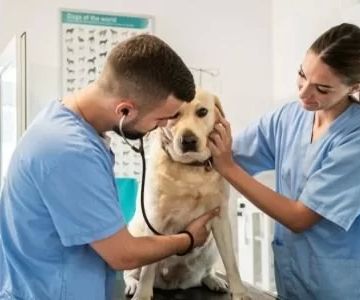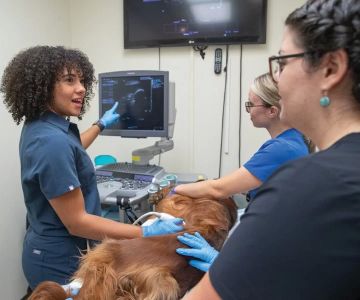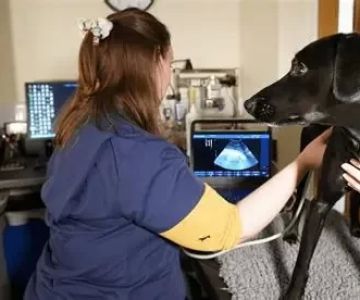- 1‑academic‑foundation
- 2‑undergraduate‑experience
- 3‑vet‑school‑admissions
- 4‑vet‑school‑education‑phases
- 5‑licensing‑clinical‑training
- 6‑real‑vet‑story
- 7‑career‑launch‑and‑resources
1. Academic Foundation
1.1 Strong science background: The first step in the process to become a veterinarian starts in high school with a focus on biology, chemistry, physics, and math. Employers and admissions committees expect a consistent record in demanding courses.
1.2 Extracurricular preparation: Volunteering at animal shelters, assisting vets in clinics, or engaging in biology clubs adds real context. When students ask, “what is the process of becoming a veterinarian,” this early exposure shows commitment.
1.3 Personalized academic planning: Talk with a guidance counselor to align school classes for pre-vet majors. Map out AP options and consider dual-credit science courses through community college for depth.
2. Undergraduate Experience
2.1 Pre‑vet undergraduate major: Although any major is allowed, most successful applicants choose animal science, biology, or biomedical sciences. The process of becoming a veterinarian centers on completing course prerequisites.
2.2 Gaining hands‑on experience: Shadow veterinarians in various practices—small animal, equine, or exotics—to understand different paths. Volunteering abroad conservation projects can showcase global engagement.
2.3 Building a competitive application: High GPA and strong GRE/VCAT scores matter. Leadership roles—like organizing a pre-vet club trip—help. When explaining “what is the process of becoming a veterinarian,” these extras matter.
3. Vet School Admissions
3.1 Choosing the right schools: Research each school’s unique programs—some focus on wildlife medicine, others on research or mobile units. Make a spreadsheet comparing tuition, class size, and location.
3.2 Crafting your personal statement: Tell your story—why animals, a defining experience (e.g. healing a rescue dog), and goals. This makes the process of becoming a veterinarian feel real and human.
3.3 Securing strong references: Ask for letters from mentors who know your work with animals and science. A glowing vet reference describing your compassionate care carries weight.
4. Vet School Education Phases
4.1 Pre‑clinical years: Typically, the first two years focus on anatomy, physiology, pathology, microbiology. Daily labs dissect specimens, learn diagnostics, and build core competence.
4.2 Clinical rotations: Years three and four bring rotations in surgery, internal medicine, emergency, exotics, and production animal clinics. Students rotate through real cases under supervision.
4.3 Extracurricular enrichment: Join emergency clubs, research projects, or student chapters of associations. Attending a wildlife rescue case during rotation can be the highlight and answer “what is the process of becoming a veterinarian” with impactful stories.
5. Licensing & Clinical Training
5.1 Taking licensing exams: In the U.S., prospective vets sit the NAVLE (North American Veterinary Licensing Exam). Preparation classes, group study, and mock tests improve scores and confidence.
5.2 Internship & residency options: Graduates may pursue internships to hone emergency or specialty skills. Those aiming to specialize (e.g., oncology, cardiology) complete multi‑year residencies.
5.3 Continuing education: Even after vet school, vets must fulfill CE credits. This ensures you stay updated on new vaccines, imaging tech, or surgical techniques.
6. Real Vet Story
Meet Dr. Alex, who started the process of becoming a veterinarian after rescuing an injured hawk in college. His story added depth to his vet school application. During his clinical rotations, he led a successful rehab for an exotic parrot—earning praise and fellowship invitations.
Today, Dr. Alex practices in a mixed animal clinic. He credits his structured pathway—solid academics, hands‑on experience, and a personal narrative—for accelerating his journey and making “what is the process of becoming a veterinarian” tangible for others.
7. Career Launch and Resources
7.1 Choosing your first job: Decide between private practice, shelter work, zoo medicine, or research. Each setting provides different work‑life balance and income trajectory.
7.2 Must-have resources: Prepare with top-rated vet exam prep books, join online mentor groups, and subscribe to journals. These tools enhance your knowledge and confidence.
7.3 Next steps: Ready to begin “what is the process of becoming a veterinarian”? Purchase our Vet School Success Pack—comprehensive guides, application checklists, and personalized support—to streamline your journey.









